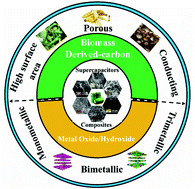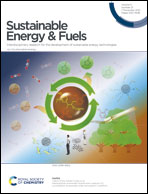Recent progress in and prospects for supercapacitor materials based on metal oxide or hydroxide/biomass-derived carbon composites
Abstract
In the pursuit of high power and energy density electrochemical energy storage technologies, hybrid supercapacitors (HSCs) have drawn increasing research attention due to the combination of the outstanding power density of supercapacitive materials with the high energy density of battery-type materials into a single device. At the same time, many efforts are underway to design effective electrode materials which exhibit good electrical conductivity and abundance, as well as having low cost with easily controllable intrinsic properties. Among various electrode materials, biomass-derived carbon has attracted considerable attention because of the abundance, low cost, environment friendliness and promising electrochemical properties. Furthermore, biomass carbon-based materials in combination with metal oxides/hydroxides with synergetic effects for supercapacitor applications have been a trend in recent years as high-performance electrode materials. Therefore, in this review we focus on the recent progress and current trends in biomass carbon-based composites containing mono-, bi- and trimetallic metal oxides and hydroxides for supercapacitor applications, highlighting the top 5 composites based on mono- and bimetallic oxides and hydroxides. Finally, the prospects and possible future directions are discussed.

- This article is part of the themed collections: Celebrating Latin American Chemistry and Sustainable Energy and Fuels Recent Review Articles


 Please wait while we load your content...
Please wait while we load your content...